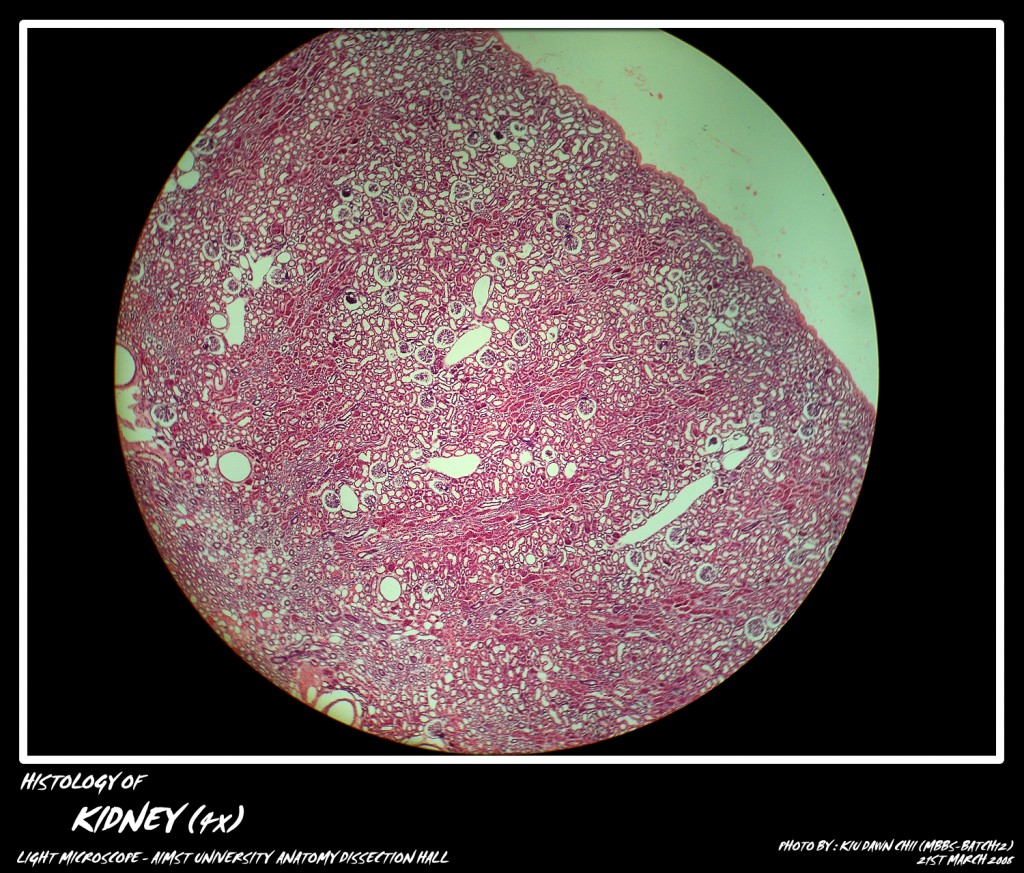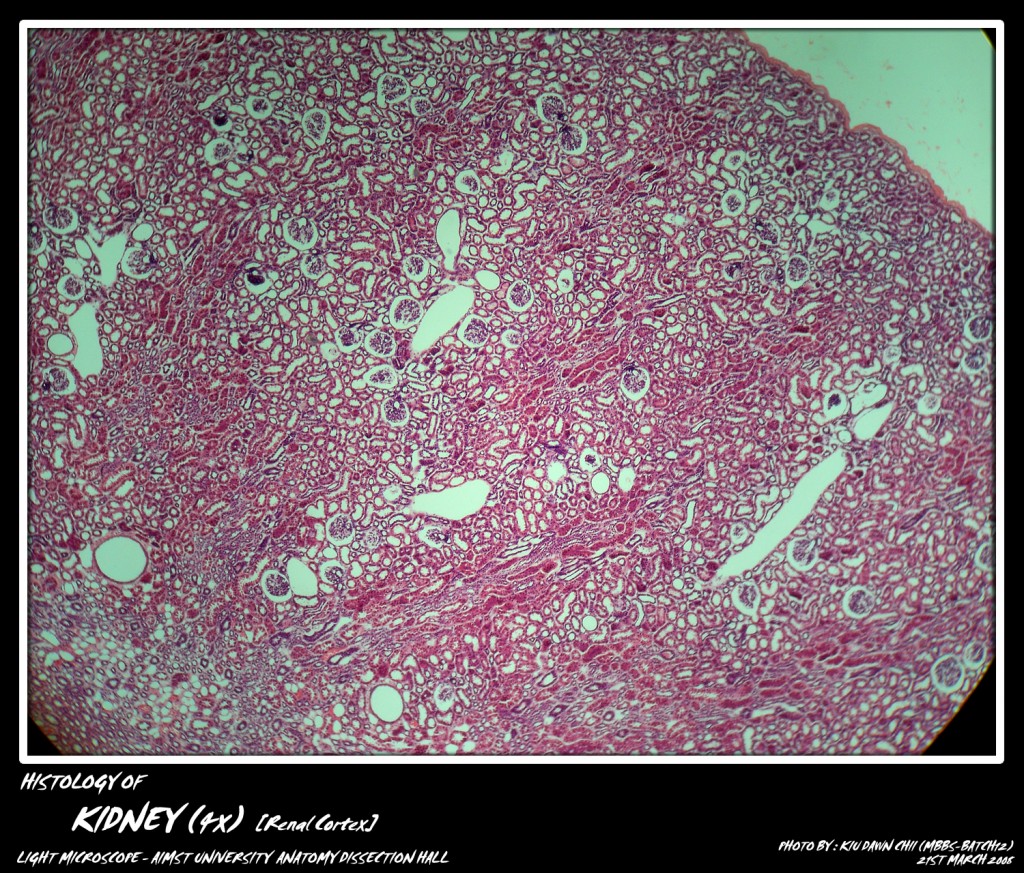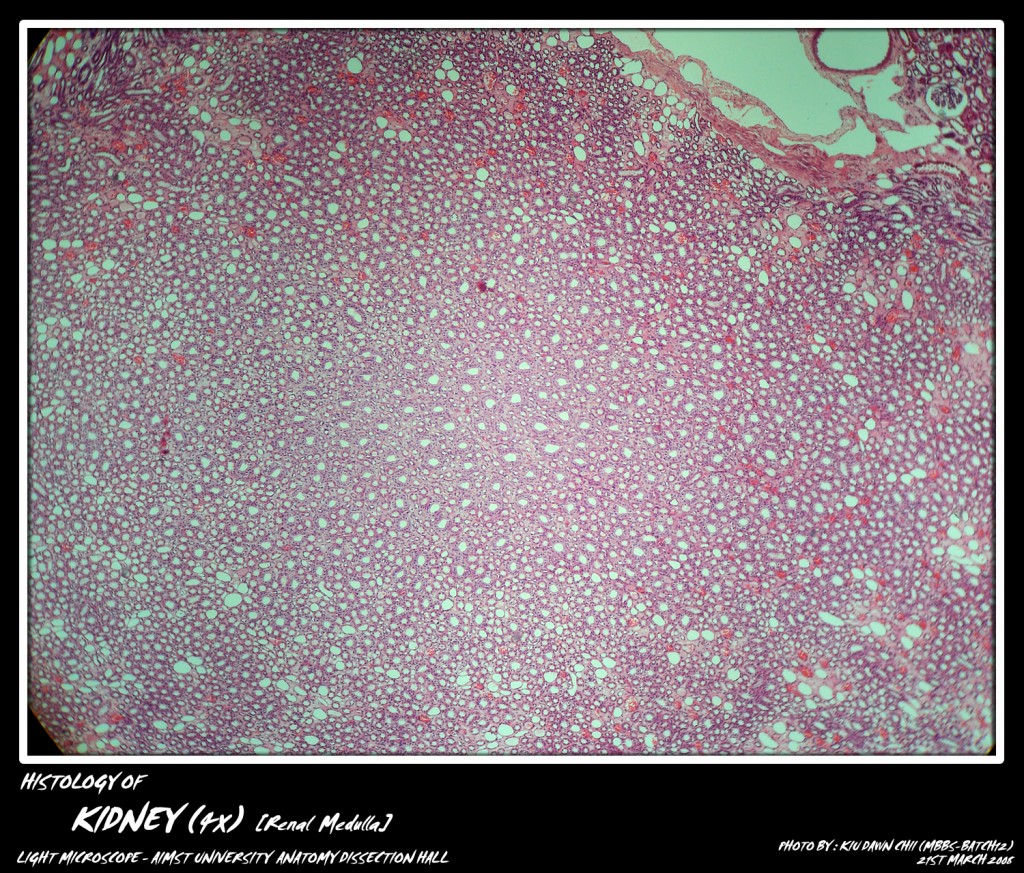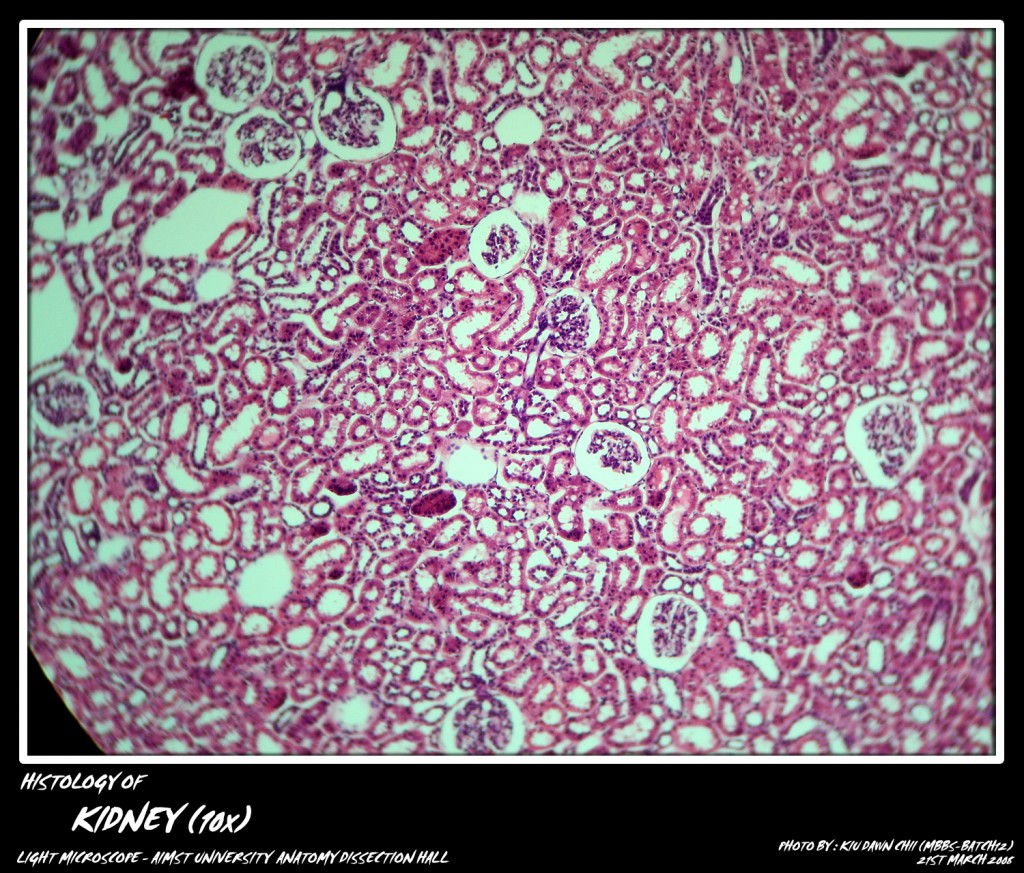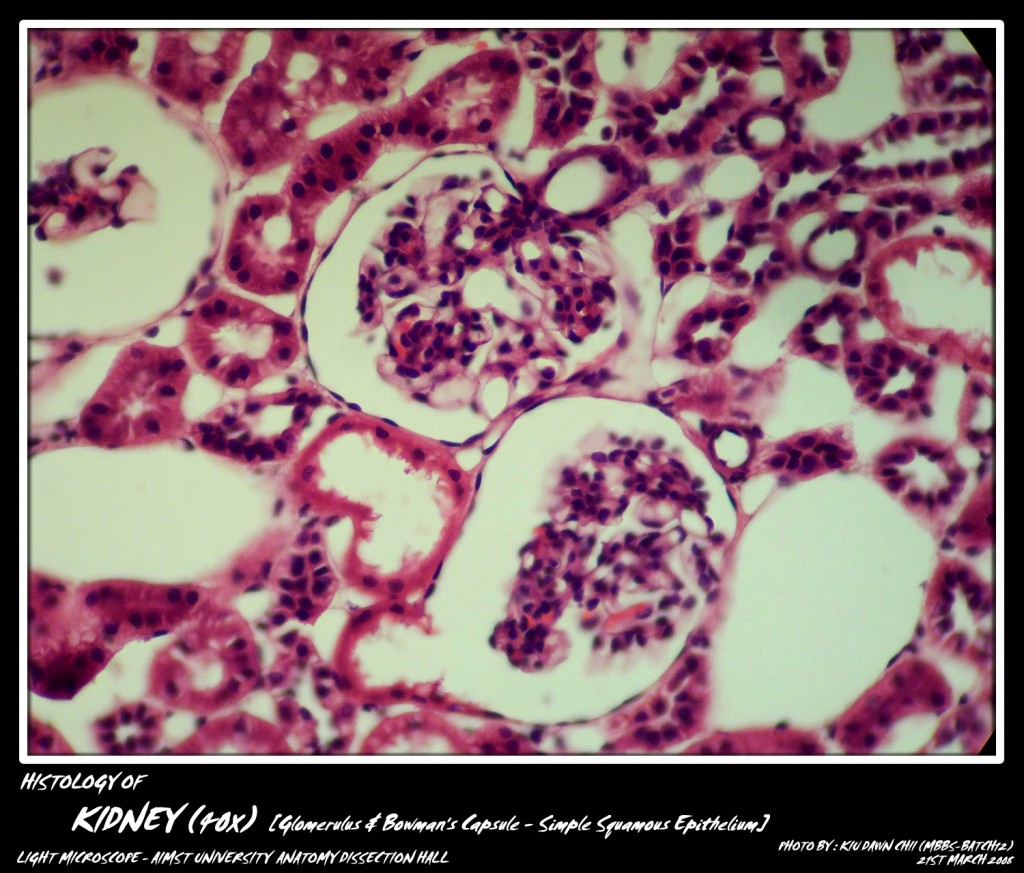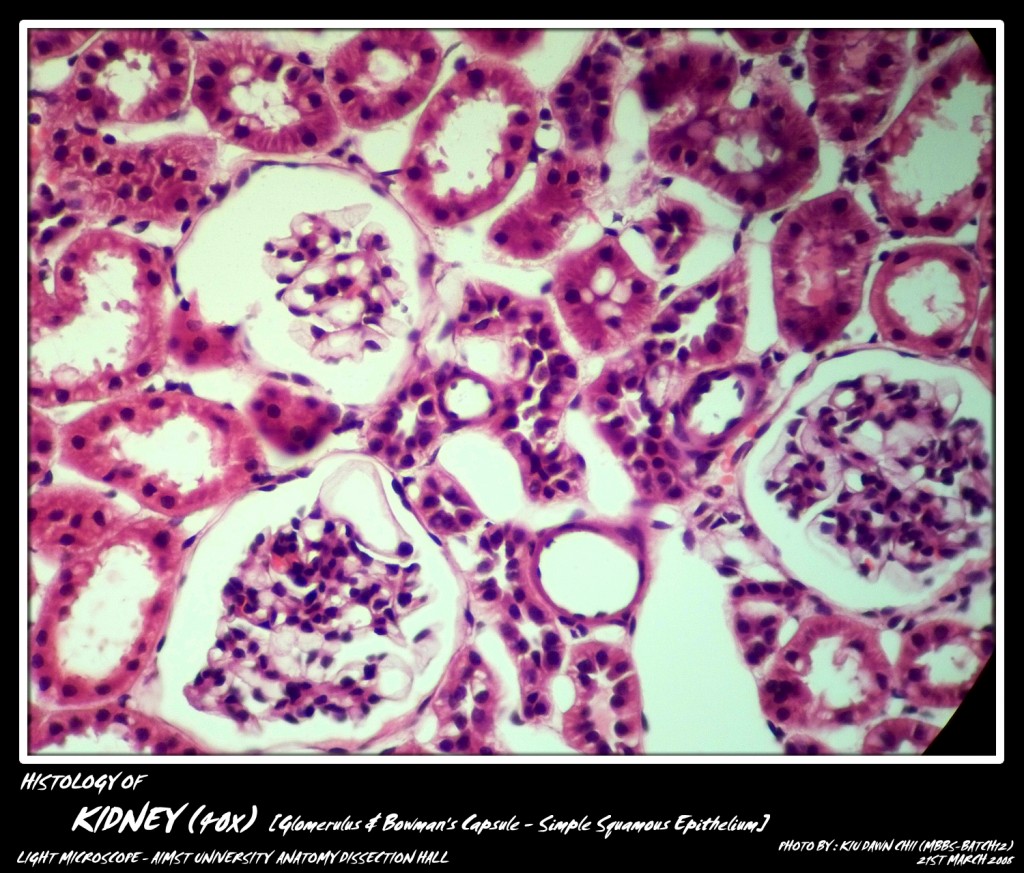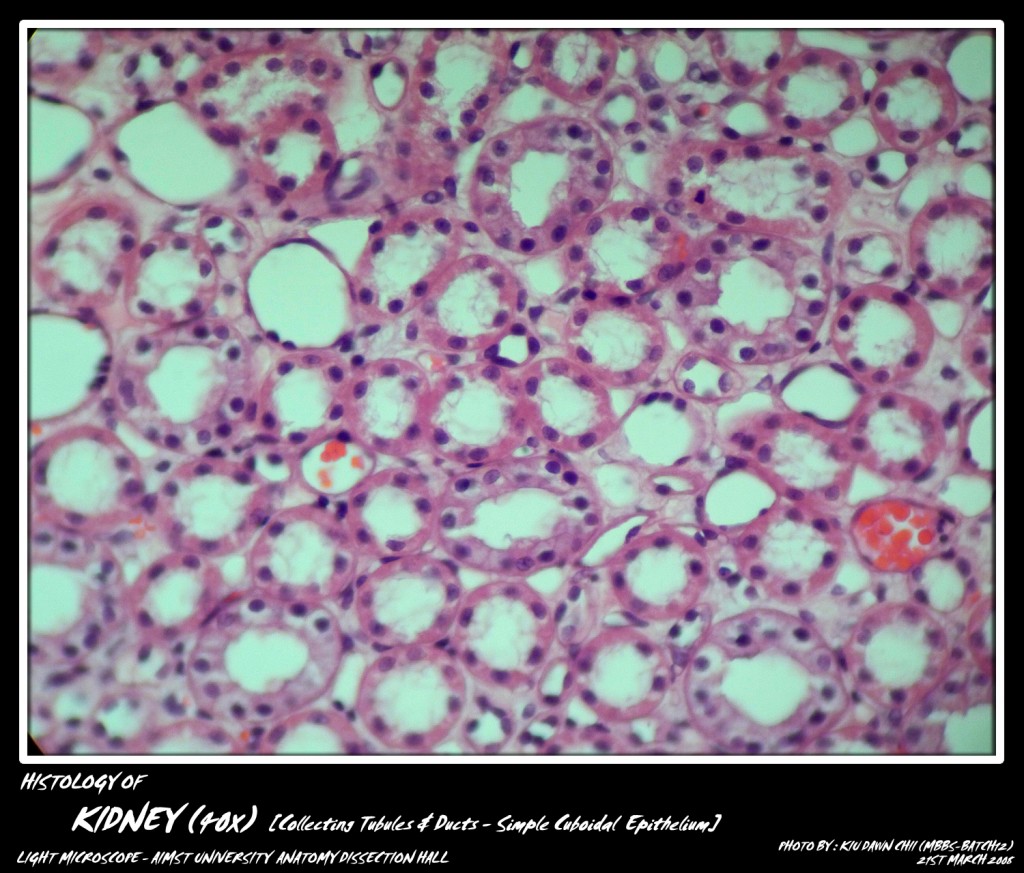The kidney is covered by a connective tissue capsule and adipose tissue. It is divided into an outer cortex which appears granular in a cut section, and an inner medulla, made up of 8-18 conical masses called renal pyramids. The bases of the pyramids are directed peripherally and the apices directed inwards towards the renal sinus, where they form papillae. Each pyramid and the cortical tissue capping it is called a lobe of the kidney. The extensions of medulla into the cortex are called the medullary rays. The extensions of cortical tissue into the medulla in between the pyramids are called columns of B ertini.
Circulation of blood in Kidney
The renal arteries are shod and broad to maintain hydrostatic pressure for proper filtration of blood. Each renal artery on entering the kidney divides into dorsal and ventral branches.
These on subsequent divisions run in between the adjacent pyramids and are termed interlobar arteries. At the base of the pyramid, interlobar artery divides dichotomously into branches which run at right angles to the parent stem. These are named as arcuate arteries. Both the interlobar and arcuate arteries to each lobe do not anastomose with the adjacent arteries. Arcuate artery gives rise to numerous straight interlobular arteries. Each interlobular artery gives off the afferent arterioles for the cortical glomenih and for the juxta-medullaiy glomeruli. These break up into capillary plexus of the glomerulus and rejoin to form efferent arterioles. Efferent arteriole of cortical glomeruli form cortical intertubular capillary network, which drains into interlobular vein. This in turn ends into arcuate, interlobar and finally renal vein. Efferent arteriole of the juxta-medullary glomeruli break up in the medulla into bundles of thin walled veins, the vasa recta which make hair-pin bends at varying levels and reach back into the cortex. Vasa recta serve as counter- current exchanges for the various diffusible substances. These vasa recta drain into interlobular, arcuate, interlobar and finally into the renal vein.
Structure of kidney
The kidney is composed of a very large number of tortuous, compactly arranged uriniferous tubules, bound by minimal amount of connective tissue containing blood vessels lymphatics and nerves. Parts of the uriniferous tubule are nephron and collecting tubule. Nephron is the secretory component, developing from metanephros, while collecting ducts is the collecting component arising from the ureteric bud.
Nephron is comprised of the renal corpuscle i.e. glomerulus, meant for filteration of blood and the renal tubule which functions for selective reabsorption. The various components of renal tubule are glomerular capsule, proximal convoluted tubule, descending limb of loop of Henle, loop of Henle (‘U’ shaped) ascending limb of loop of Henle, distal convoluted tubule and junctional tubule which finally ends by joining the collecting tubule.
The collecting tubule receives many junctional tubules from numerous glomeruli. Many collecting tubules join to form the duct of Bellini which opens into the minor calyx.
The glomerulus is the most characteristic feature of the cortex. It is made up of capillaries which are lined by endothelial cells. The lining of these capillaries is fenestrated. The tuft of glomerular capillaries is enveloped by Bowman’s capsule, which is double layered cup lined by squamous epithelium. The layer closely applied to the glomerulus is the visceral layer lined by specialised cells called podocytes and the outer is the parietal layer. Between the two layers is a slit like space called the capsular space. The glomerulus with Bowman’s capsule is called the renal corpuscle. The glomerular capillaries connect the afferent and efferent arterioles. The site where afferent and efferent arterioles enter and leave the glomerulus is called the vascular pole. The afferent arteriole has a thin tunica intima and tunica adventitia, but the cells of the tunica media close to the vascular pole are well developed The nuclei of these cells are rounded, the cytoplasm is basophilic, granular and they are named juxta-glomerulus (JG) cells.
In the region of the JG cells the internal elastic lamina is absent. These cells are close to the macula densa of the distal convoluted tubule.
Proximal convoluted tubule is quite tortuous. This segment of the nephron makes up the bulk of the kidney cortex. The cut sections of tubules show a very narrow lumen. The epithelium lining these tubules consists of a single layer of broad based columnar cells, resting on a basement membrane. These cells bear a conspicuous brush border of closely packed microvilli. Each cell contains a single spherical nucleus with a nucleolus lying near the base. The cytoplasm of the cells is stained deeply with eosin stain and is granular. The proximal tubule reabsorbs 87.5 per cent of water and sodium from the glomerular filtrate. It also reabsorbs amino acids and glucose.
Loop of Henle : It consists of the descending limb of loop of Henle, upper part of which is structurally a continuation of the proximal convoluted tubule. The lower part of descending limb is a thin segment lined by squamous cells, the nuclei of which bulge into the lumen. The lowest part of descending limb descends into medulla, forms a loop and continues as the ascending limb of loop of Henle. The upper part of ascending limb is thicker and is lined by cuboidal cells. It ascends back into the cortex and continues as the distal convoluted tubule.
Distal convoluted tubule is the continuation of the upper part of ascending limb of the loop of Henle. The first loop of this tubule lies close to the vascular pole, particularly to the afferent arteriole in the region of the juxta-glomerular cells. The part of the tubule in contact with the afferent arteriole has a heavily nucleated area. This area is called the macula densi The distal convoluted tubule has many shorter loop. The epithelium of these tubules is cuboidal and the lumen is larger than that of the proximal convoluted tubules. The cells rest on a basement membrane. The cells do not have a brush border and the cytoplasm takes up a light eosin stain. It reabsorb3 about 14 percent of water and this function is controlled by the antidiuretic hormone (ADI-I) of the posterior pituitary gland. The distal convoiuted tubule opens by a small straight tubule into the collecting tubule.
Each collecting tubule collects the urine from many distal convoluted tubules. These tubules unite with one another at short intervals and drain into the ducts of Bellini, which open on to the summit of a papilla, which in turn drains into a minor calyx.
The cortex of the kidney shows cut sections of glomeruli, many sections of proximal convoluted tubules, some sections of distal convoluted tubules, few collecting ducts and capillaries. A section through the pyramid of medulla of kidney shows numerous light staining collecting ducts, sections of loops of Henle (thick and thin segments of descending and ascending limbs), capillaries and connective tissue.
Adapted from: http://myaimst.net/mbbsb12/photo/histo/yr1histo/kidney.html
Micro-photograph taken at AIMST University Anatomy Dissection Hall during Histology class, using Canon A40 camera over light microscope.

